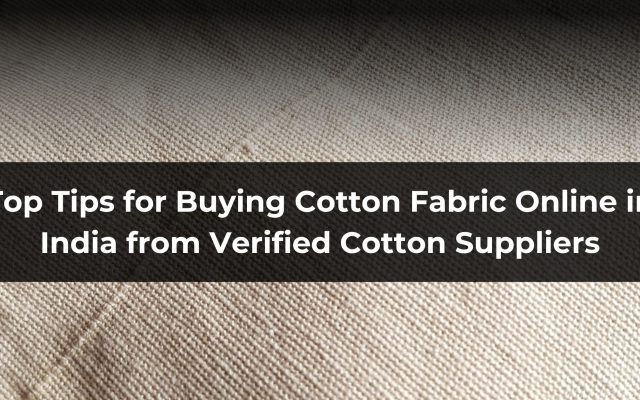India is a global leader in textiles. Fabric suppliers in the country play an important role in meeting both local and international demand. Today, technology is transforming the way suppliers and buyers connect. With the growth of fabric selling websites, sourcing fabrics has become faster and more transparent.
These platforms are building strong networks that link manufacturers to buyers. As a result, the process of finding and buying fabric is easier than ever. Let’s explore how these networks are reshaping the industry and why they matter.
Why Fabric Supplier Networks Are Important
Fabric suppliers serve as a link between textile manufacturers and businesses. Here’s why they are essential:
- Diverse Fabric Options
Suppliers offer a wide variety of fabrics. These include cotton, silk, synthetic, and even technical fabrics. - Quality Assurance
Reliable suppliers ensure that fabrics meet quality standards. This builds trust among buyers. - Affordable Prices
Suppliers source fabrics directly from manufacturers. This keeps prices competitive for buyers. - Support for Small Businesses
Small businesses often need smaller quantities of fabric. Supplier networks make this possible by offering flexible order sizes. - Global Reach
With online platforms, Indian fabric suppliers now sell to global markets. This has boosted India’s position in the textile industry.
How Fabric Selling Websites Are Changing the Industry
Fabric selling websites are digital marketplaces. They connect suppliers with buyers, making it easy to find and purchase fabric.
Benefits of Fabric Selling Websites
- Increased Visibility
Suppliers can reach buyers from all over the world. - Simplified Transactions
Buyers can place orders, pay online, and track deliveries with ease. - Verified Sellers
These websites often feature verified suppliers. This ensures that buyers get high-quality materials. - Competitive Prices
Buyers can compare prices across different sellers and choose the best deals. - Eco-Friendly Options
Many websites highlight sustainable and eco-friendly fabrics, meeting the growing demand for green textiles.
Top Fabric Selling Websites in India
Here are trusted website that connect buyers with fabric suppliers:
TEXchange Global
TEXchange Global is a platform for verified fabric suppliers.
- It offers a wide range of fabrics, including sustainable options.
- Buyers benefit from transparent pricing and secure transactions.
Challenges Fabric Suppliers Face
Fabric suppliers often face challenges, but online platforms help solve many of these problems:
- Fragmented Markets
India’s textile market is vast and disorganized.
Solution: Online platforms bring suppliers and buyers together in one place.
- Quality Concerns
Maintaining consistent quality is not easy.
Solution: Verified suppliers on these platforms ensure buyers get reliable products.
- Delivery Issues
Traditional sourcing methods can cause delays.
Solution: Online platforms provide better logistics and faster deliveries.
Future Trends in Fabric Supplier Networks
The fabric industry is evolving. Here are some trends shaping its future:
- AI-Powered Platforms
AI is helping buyers find the exact fabrics they need faster. - Blockchain Technology
Blockchain is improving supply chain transparency. Buyers can now trace the origin of their fabrics. - Focus on Sustainability
Demand for eco-friendly fabrics is increasing. Suppliers are adapting to this trend by offering organic and recycled materials. - Virtual Showrooms
Buyers can now view fabrics online through virtual showrooms. This reduces the need for physical samples. - Global Expansion
Indian suppliers are using online platforms to reach new markets worldwide.
How Buyers Can Use Fabric Supplier Networks
Here are some tips for buyers to get the most out of these networks:
- Define Your Needs
Know the type, quantity, and specifications of the fabric you need. - Choose Trusted Platforms
Use platforms like TEXchange Global or IndiaMART to find reliable suppliers. - Request Samples
Ask for samples to check the fabric quality before placing bulk orders. - Compare Prices
Look at prices from multiple suppliers to get the best deals. - Review Policies
Understand shipping and return policies to avoid issues later.
Conclusion
Fabric supplier networks in India are transforming the textile industry. With the help of fabric selling websites, buyers can now access high-quality materials with ease. These platforms make sourcing fabrics faster, simpler, and more reliable.
Whether you’re a small business owner or a large enterprise, using these networks can streamline your operations. Platforms like TEXchange Global and IndiaMART offer the tools you need to succeed in fabric sourcing. Start exploring today and experience the benefits of modern fabric supplier networks!




